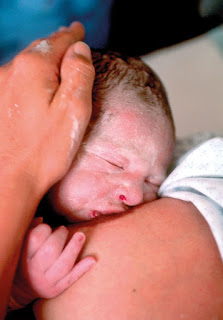From
MOM – with love
Today’s post is about magic colostrum
or baby’s first milk. This ‘liquid gold’ can be compared to condensed milk. Do
you remember sucking this super sweet, ultra-thick yellow liquid straight from
a tin when you were a kid? Growing up, eating mielie pap smothered in condensed
milk for breakfast was a super-special treat. Today I keep a tin or two in the
cupboard for emergencies, puddings or making a sweet and creamy cup of coffee.
Condensed milk was developed in the
1820’s as a way of preserving then reconstructing milk. Vacuum pans had been developed
to concentrate orange juice. This method was used with milk, and the trick was
concentrating it without curdling the milk. Tinned, this new innovation was an
invaluable source of energy for troops during the world wars, and no doubt will
be more in demand as fresh milk supplies dwindle as a consequence of Covid.
But I digress.
When I had my first baby, my
gynaecologist pooh-poohed colostrum, calling it the ‘waste product’ of pregnancy.
Some cultures even insist on emptying the breast of colostrum and discarding it.
Thumbs up to research that has taught us more about this golden liquid and how
important it is for new-borns. When you understand this, you’ll appreciate why
your baby, whenever possible shouldn’t be deprived of MOM (Mother’s Own Milk).
What’s packed into colostrum?
Colostrum is easily digested and perfectly
designed for a newborn’s unique inexperienced digestion and metabolism. Colostrum
has a way of preventing the ‘overloading’ of this system during those very
important first few days of life when a baby is adjusting to 'extra-uterine' life.
Sugar: Newborn’s
need energy to survive (keep breathing on their own) and stay warm. Colostrum
contains four times as much energy (or calories) as a 5% glucose solution
(sugar water). When paediatricians worry about low blood sugar levels, they
sometimes insist on giving babies glucose water – but this can cause ‘reactive
hypoglycaemia’. Besides, higher protein levels in colostrum have a stabilising
effect on blood glucose levels.
Colostrum
contains the right proportions of proteins, healthy cholesterol and carotene
(that’s where it gets its yellow colour) – helping to make Vitamin A.
Nature’s natural
vaccine: Colostrum is rich in antibodies. These are especially helpful because
they can be absorbed directly into the body from the stomach. This means that a
mother is literally immunising her baby with antibodies like lactalbumin,
lactoferrin and IgA every time she breastfeeds. Wow! This also helps to
protect her baby from bacteria and viruses associated with her own body as well
as from people and the environment. The concentration of antibodies in
colostrum is at its peak in the first few hours after birth.
Understanding
your baby’s gut: Colostrum helps to establish the natural flora in the
digestive tract. Lactobacillus Bifidus helps to establish your baby’s immune
system, teaches the gut to absorb nutrients and guards against allergies. This
is especially helpful in allergy-prone families. Another plus is that colostrum
has a laxative effect and helps the baby to poo. The first stool is called
meconium – a thick, sticky, blackish slug-looking substance that is the waste
collected in the intestines during pregnancy. Cleaning this out quickly helps
to prevent ‘baby jaundice’*
Your baby’s marble-size stomach: Just think
about it, your baby’s tiny little stomach is about the capacity of a small
marble – or the equivalent of one teaspoonful of liquid. Feeding a new-born
with 20 MLS of formula will make him uncomfortable – or feeling as full as a
tick, like he has eaten a six-course meal. This also means that the baby will
sleep for 4 hours or longer (once considered ideal). But today we know that
it’s normal for a new-born to have quick, short feed every 2 hours. Not only
does this help with skin-to-skin bonding, it tops up baby’s sugar levels AND
stimulates hormone production in the mother (see my previous blog) that boosts
milk production and helps to minimise blood loss after the birth by helping the
womb to contract.
Where to from here? Colostrum
collects from about 20 weeks of the pregnancy. From the moment of birth, the
breasts start making transitional milk that the baby will drink as soon as the
breasts have been emptied of colostrum. We used to say this was three days, but
we know today that the more often a baby is put to the breast, the sooner he
will consume the colostrum, then transitional milk that is the very early
mature milk, that quickly advances to mature milk.
A mother’s breasts change when her
milk ‘comes in’. When this happens, it’s important that her baby has learned to
latch correctly because most breastfeeding problems start with incorrect
latching.
* More about this in my next blog.

